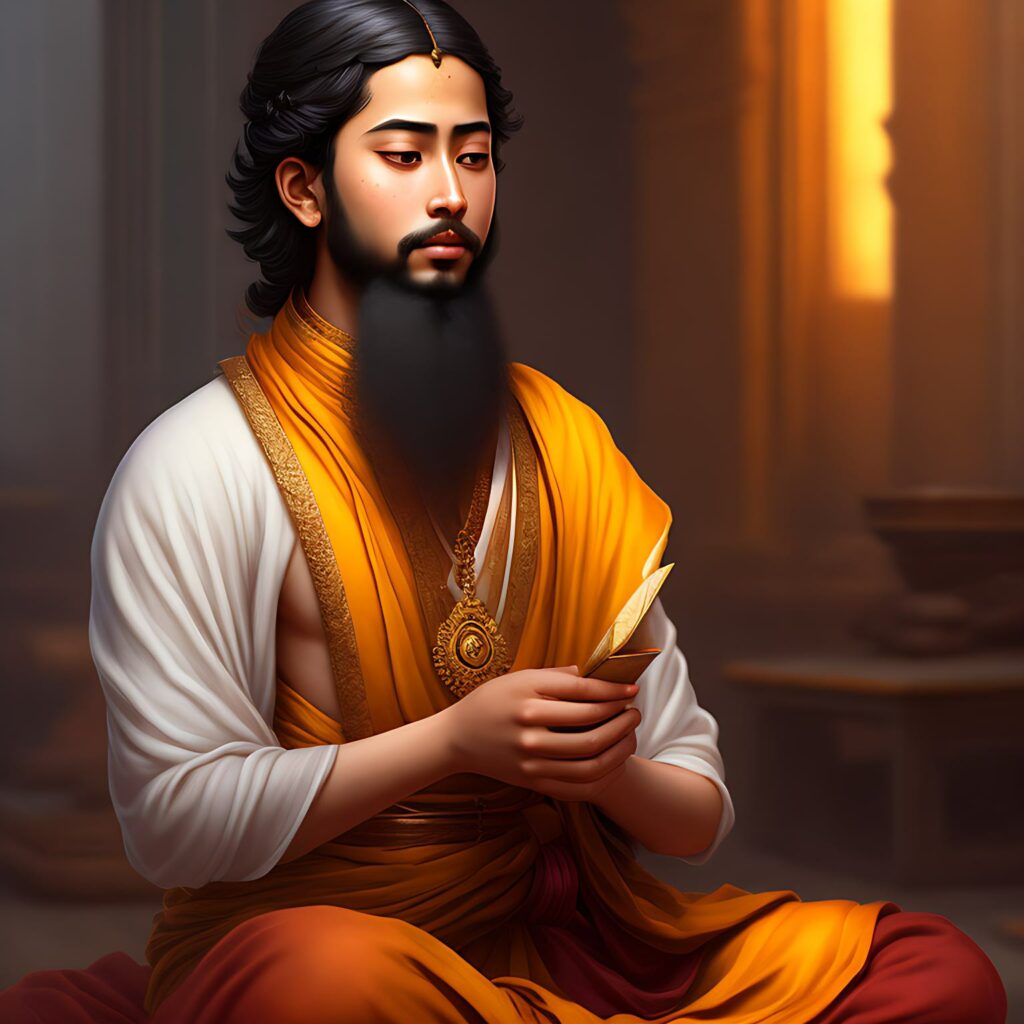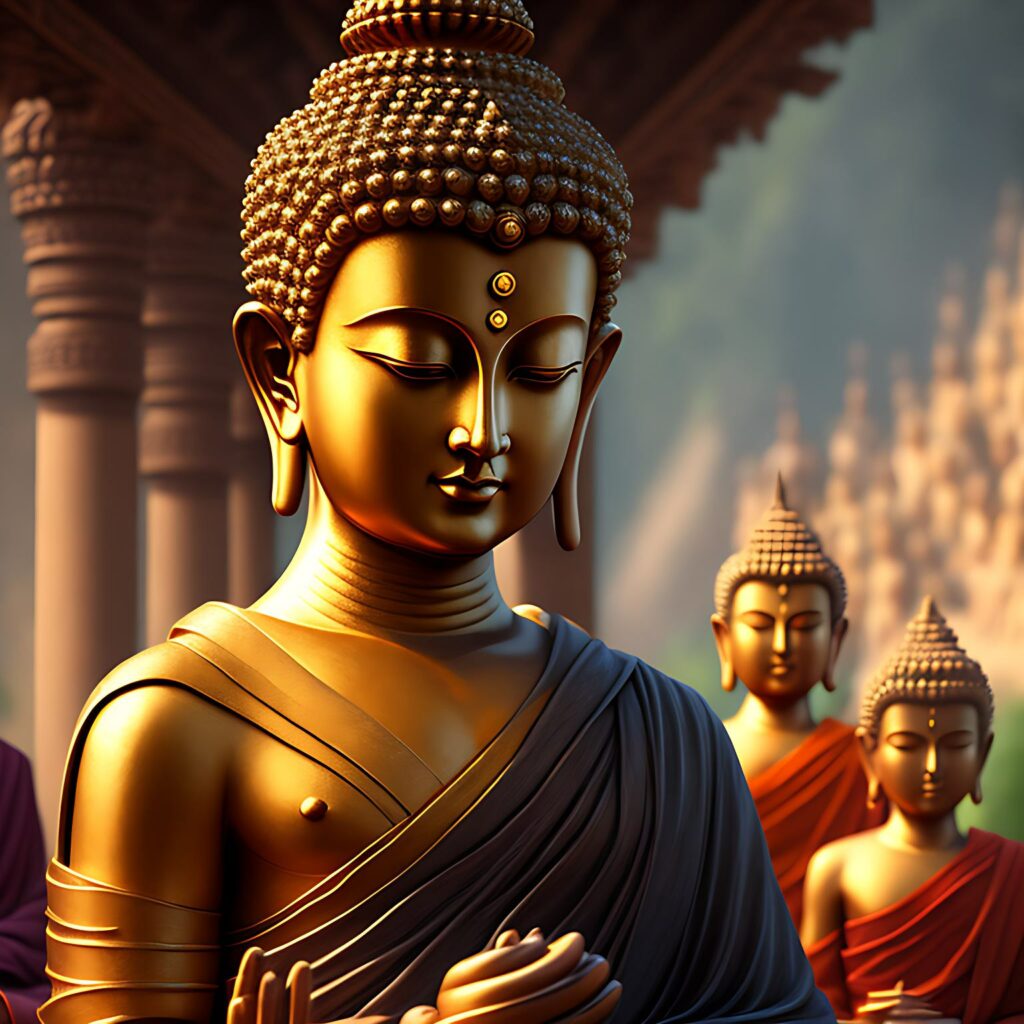Siddhartha Gautama, also known as the Buddha, was a spiritual teacher and founder of Buddhism, one of the world’s major religions. Born into a life of luxury as a prince, Siddhartha eventually renounced his worldly possessions and embarked on a quest for enlightenment.
Birth and Early Life
Siddhartha Gautama was born in the 5th century BCE in Lumbini, present-day Nepal. His father, King Suddhodana, and mother, Queen Maya, were rulers of the Shakya clan. Siddhartha was born into a life of luxury and privilege, living in a palace with all the material comforts one could desire.

According to legend, it was prophesied at birth that Siddhartha would become a great ruler or a spiritual leader. Suddhodana shielded Siddhartha from the harsh realities of life outside the palace walls to ensure that his son would follow in his footsteps as a king.
The Four Sights
When Siddhartha was around 29 years old, he ventured outside the palace for the first time, where he encountered the “Four Sights.” These sights were an old man, a sick person, a corpse, and a wandering ascetic. Confronted with aging, sickness, and death, Siddhartha became deeply troubled by the suffering he saw.
The sight of the ascetic, who had given up material possessions in search of spiritual truth, inspired Siddhartha to embark on a similar journey. This marked the beginning of his quest for enlightenment.
Renunciation and Asceticism
Determined to solve human suffering, Siddhartha left his wife, son, and the comforts of the palace to live as a homeless ascetic. He spent six years wandering northern India, studying under various spiritual teachers and practicing rigorous asceticism.
However, Siddhartha found that extreme deprivation and self-mortification were not leading him closer to enlightenment. He abandoned these practices and followed a path of moderation known as the Middle Way.
Enlightenment under the Bodhi Tree
Siddhartha, weakened by years of ascetic practices, decided to meditate under a bodhi tree until he reached enlightenment. After 49 days of meditation, he finally reached a profound understanding known as Nirvana. He became the Buddha, or “The Enlightened One,” at 35.
Teachings and the Spread of Buddhism
After his enlightenment, the Buddha spent the remaining 45 years teaching others how to achieve the same state of enlightenment. His teachings, collectively known as the Dharma, focused on the Four Noble Truths and the Eightfold Path.

The Four Noble Truths are:
The truth of suffering (dukkha)
The truth of the cause of suffering (samudaya)
The truth of the end of suffering (nirodha)
The truth of the path leading to the end of suffering (magga)
The Eightfold Path, which is the practical guide to achieving enlightenment, consists of:
understanding
Right intention
Right speech
Right action
Right livelihood
Right effort
Right mindfulness
Right concentration
Death and Legacy
The Buddha passed away at 80 in Kushinagar, India, after experiencing a severe illness. His body was cremated, and his relics were distributed among his followers, who enshrined them in various stupas across the region. This marked the beginning of the tradition of venerating the Buddha’s relics to pay him homage.
The First Buddhist Council
Shortly after the Buddha’s passing, his closest disciples convened the First Buddhist Council to preserve and organize his teachings. The council was held in Rajagriha (present-day Rajgir, India) and was attended by 500 arhats or enlightened monks. The council aimed to ensure that the Buddha’s teachings would be accurately transmitted to future generations. This marked the beginning of the formation of the Buddhist scriptures, known as the Pali Canon.

The Spread of Buddhism
Buddhism continued to grow in India after the Buddha’s death, particularly during the reign of Emperor Ashoka in the 3rd century BCE. Ashoka converted to Buddhism after witnessing the brutalities of war and actively supported its spread throughout his empire, which spanned much of the Indian subcontinent.
Through trade, missionary activities, and cultural exchanges, Buddhism spread to Central Asia, China, Korea, Japan, and Southeast Asia. Later, Buddhism would go to Tibet, where it developed into a unique form known as Vajrayana or Tibetan Buddhism.
Schools of Buddhism
Different interpretations of the Buddha’s teachings developed as Buddhism spread, forming several schools. The two major branches of Buddhism are Theravada, which is practiced mainly in Sri Lanka and Southeast Asia, and Mahayana, which is practiced in East Asia.
Theravada Buddhism emphasizes personal enlightenment through strict adherence to the Buddha’s original teachings. On the other hand, Mahayana Buddhism focuses on the ideal of the bodhisattva, a compassionate being who delays enlightenment to help others achieve it.

Last Words
The Buddha addressed 500 monks on his deathbed; these were his final words.
“Behold, O monks, this is my last advice to you. All component things in the world are changeable. They are not lasting. Work hard to gain your own salvation.”
Related Podcast Episode
Ide, whose family stems from Thailand and who was raised Buddhist, shares his incredible story of dark forces plaguing his life, causing fear and hopelessness. He lived the teachings of The Buddha and sought his Buddhist temple to no avail. In desperation and with nowhere else to turn, he opened the door to pursue God elsewhere, if there was one. Ide had a divine encounter.


Reader Interactions